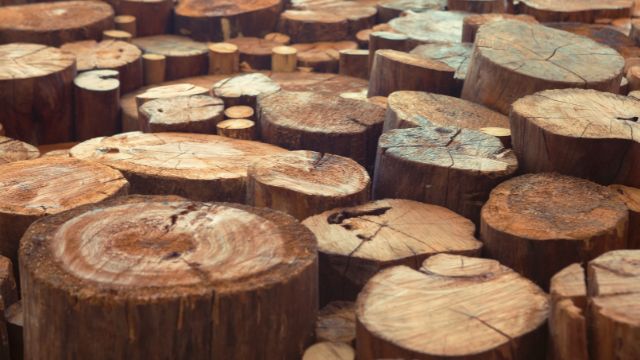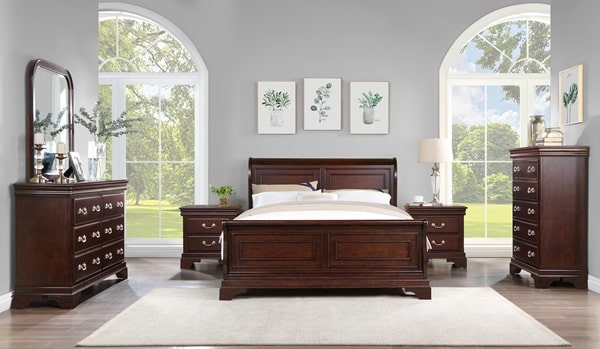It can feel like a jungle out there when you’re hunting for the perfect wood for your furniture or interior design project. So many options, so many choices! Right? But among the vast array of wood types, rubber wood, and teak wood are the headliners, often getting the star treatment. Rubber wood is an intriguing contender in the world of furniture crafting. Meanwhile, teak wood is a bit of a celebrity, celebrated far and wide for its tough nature and alluring good looks. And today we’ll put on our explorer hats and dig deep into the world of rubber wood and teak wood, weighing the pros against the cons, and making sense of what makes each tick. By the end of it, we hope to arm you with the right knowledge to make the best decision for your unique wood needs.
What Is Rubber Wood?
Despite what its name might imply, Rubber Wood is by no means a stretchy or pliable type of wood. In fact, it’s a medium-density hardwood that comes from the Pará rubber tree (also known as Hevea brasiliensis). This tree is primarily found in various regions of Asia, Africa, and South America. Initially, these trees are grown for the latex they produce, and when they’re done serving their purpose in that department, they don’t just fade away. Instead, they’re harvested for their timber. And that, my friend, is what makes rubber wood such an environmentally friendly choice because no tree goes to waste!
Pros Of Rubber Wood
- Rubberwood offers a sustainable solution to furniture making, basically giving a second lease of life to latex-producing trees that would otherwise be burnt, thereby putting a dent in deforestation-related woes.
- Don’t let its name fool you; rubber wood is part of the maple family and boasts a similar kind of resilience and sturdiness. This makes it more than capable of handling the rigors of daily life.
- Often dubbed as a latex industry leftover, rubber wood tends to have a friendlier price tag than many of its wood counterparts. So, your bank account stays happy, too!
- When processed, rubber wood is incredibly stable, meaning it won’t shrink or crack under stress. Plus, it’s a champ at soaking up stains and finishes, allowing for a fully personalized aesthetic.
Cons Of Rubber Wood
- Rubber wood can be a little delicate, as it’s prone to decay. It also has an unwanted appeal to fungi and insects, often requiring a chemical treatment as a deterrent.
- Rubber wood has a tendency to twist and warp while it’s drying, which could lead to distortion. But, once it’s properly seasoned, it becomes strong and robust.
- Rubber wood is a sponge for moisture, which leads to rapid deterioration if placed outside. So, keep your rubber wood furniture as an inside pet, or at least in areas where humidity is low.
What Is Teak Wood?
Now, this comes from the Tectona Grandis tree, a native of tropical hotspots like South and Southeast Asia. And let us tell you, it’s quite the celebrity in the world of wood! Teak wood is the darling of carpenters and furniture makers and for a good reason. It’s recognized for its innate strength, firmness, and ability to stand the test of time. So, if you’re after a wood type that’s reliable, strong, and lasts for years, you might want to make teak your go-to!
Pros Of Teak Wood
- If durability and strength are what you’re after, you’ll find a dependable ally in teak wood. Its compact grain structure, combined with an abundance of natural oils, serves as a reliable shield against intense sunlight and excessive moisture.
- The versatility of teak wood is second to none. This material can be molded into a vast array of furniture pieces and tailored to match your preferences, whether you’re a fan of painting, polishing, waxing, or varnishing.
- The impressive natural oil content of teak wood provides it with strong resistance against rot, decay, and destructive pests such as termites.
- Beauty is an integral aspect of teak wood. Its richly-textured graining gives off a captivating charm. As the years roll on, teak wood naturally matures into a stunning golden brown shade. And you’d like that for sure.
Cons Of Teak Wood
- A challenge that many consumers face in the current market is the risk of running into imitation wood passed off as genuine teak. To the untrained eye, telling the difference between real teak wood and other types of hardwood can be quite tricky.
- Due to the low supply of this natural resource, teak wood furniture comes with a hefty price tag. That’s why if you’re working within a fixed budget, teak wood might not be your first choice.
Conclusion
All in all, think about your budget, your stance on environmental impact, the importance you place on durability and aesthetics, and, most importantly, what you intend to use the wood for. Maybe the affordability and adaptability of rubber wood pique your interest. Or perhaps you’re more drawn to the enduring charm and strength of teak wood. Regardless of your pick, both these woods have a special way of adding a touch of elegance and functionality to your furniture and indoor spaces, promising to stand the test of time.



